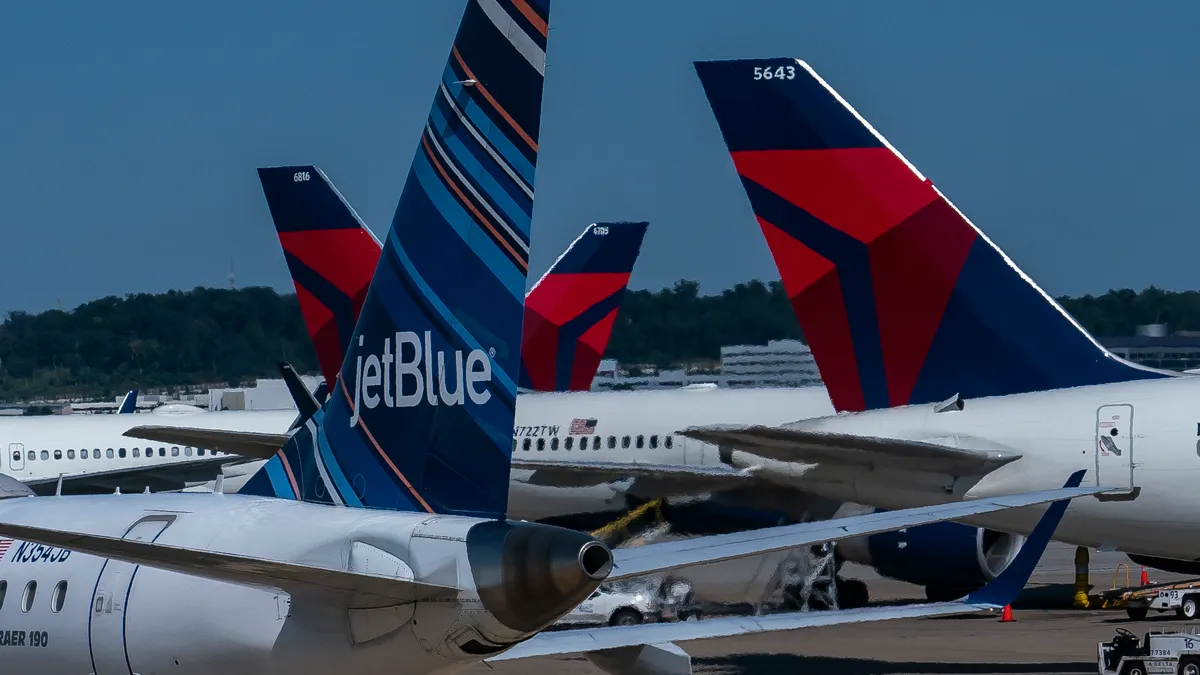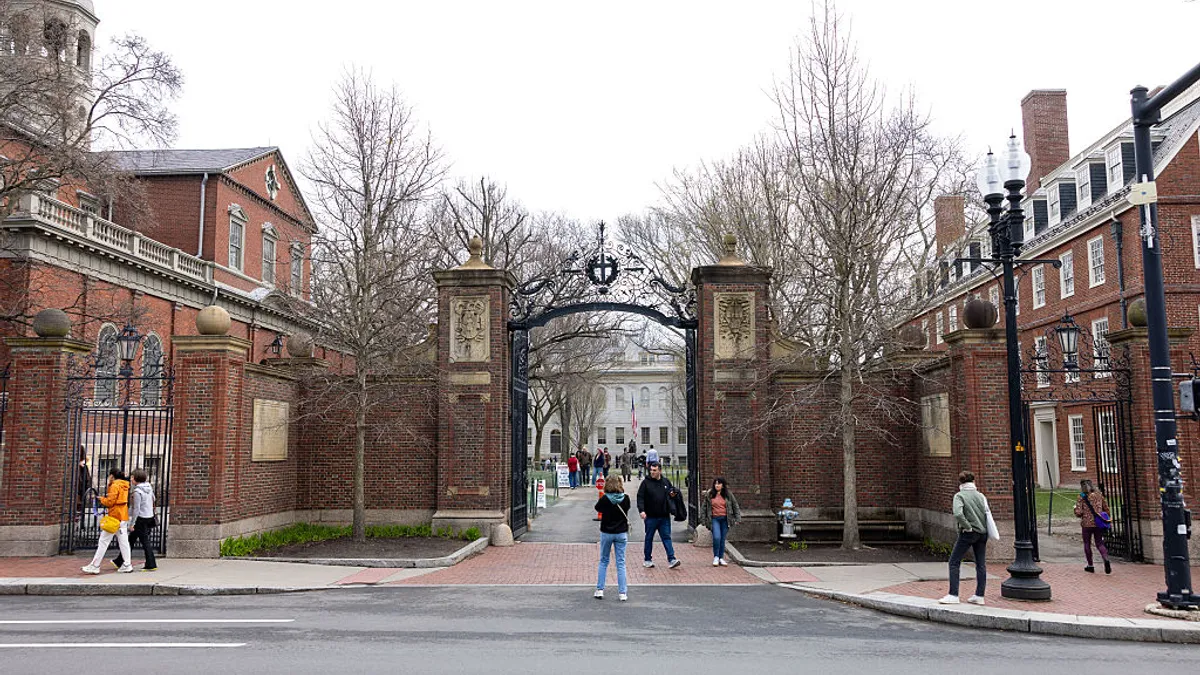Public flagship universities are often spoken of as affordable and prestigious options for students to attend in their home states. But that assumes state residents can get into their flagships.
A recent report from the Brookings Institution describes out-of-state students crowding out in-state students from public flagships. Aaron Klein, a senior fellow in economic studies at the think tank who wrote the report, discussed the findings and possible ways to address them.
This interview has been edited for clarity and length.
HIGHER ED DIVE: Your report is titled "The Great Student Swap." What is that?

AARON KLEIN: The Great Student Swap is the increasing enrollment by state flagship universities across the board of out-of-state students. Swapping in-state for out-of-state students increases tuition revenue for state universities, while also increasing the cost of college for kids. It can lead to a situation where the same amount of education is being provided to the same set of people, but at a much higher cost.
What did you find about the relationship between the percentage growth of out-of-state students at a university between 2002 and 2018 and the level of state funding or support?
There seems to be evidence that the more a state university increases their out-of-state students’ share, they start to lose more support from their state government.
There's an intuitive political logic to this. When kids who used to go to their in-state university are all of a sudden not being accepted or not going, political support within the state decreases. There seems to be a chicken-and-egg vicious cycle going on, where state universities face decreases in governmental support and often-fixed tuition prices that they can charge. So to make up that shortfall, they accept more out-of-state students, undermining the political support within the state, leading to further cuts, leading to more out-of-state students.
What does all this have to do with equity in education and student debt?
This is something that's happening very recently, very quickly, and during a period where the costs of college are escalating rapidly. In-state public universities should be an effective way to help counter the increase in the cost of college. As college becomes more expensive, the value of staying in-state grows. At exactly that moment, enrollment is moving the other direction of what we want to control the cost of college.
There's a long-term idea that there's an affordable public education option for many people, particularly if they live close to their state public university. That assumes that the state public university is focused on admitting students from their state. Out-of-state student enrollment has exploded at flagship universities. It has substantially increased the cost of college for many students. One in nine students in America attends a state flagship university.
Research has shown that some of the targeting of out-of-state students has been directed towards wealthier out-of-state students. For example, the Jack Kent Cooke Foundation found the average family income per student at the University of Michigan Ann Arbor was $200,000 a year, about four times the state's median income at the time. The California state auditor found specific targeting by Berkeley and UCLA of wealthier out-of-state families.
In the paper, you noted the University of North Carolina at Chapel Hill and University of Texas at Austin have mostly maintained their levels of in-state students due to legal mandates. You recommend other states look into similar mandates.
Would you expect any challenges?
UT Austin and UNC Chapel Hill are premier, elite, flagship universities. They're able to maintain their elite academic status while focusing overwhelmingly on students of their own state. There's no reason that every state flagship couldn't be similarly focused.
The Texas approach helped UT Austin maintain racial diversity by guaranteeing admission to the top originally 10 now 6% of every public high school graduating class in the state, including heavily minority communities.
But some of these might require tough choices. UNC Chapel Hill is required, as my report documents, to be 82% in-state. They missed that for two years by a handful of students. They got fined $1 million for being in noncompliance. These are tough mandates with real stakes.
You're starting to see changes in California, where new money was appropriated under Gov. Newsom at UC Berkeley and UCLA specifically to increase their in-state share, which I document.
Did you notice anything about the flagships that increased their shares of out-of-state students a lot, such as the University of Alabama, which you noted has seen a 50% decline in in-state enrollment? Is there anything that links them?
What was striking to me was that there weren't similarities. It appeared to be at multiple universities throughout the country – big states, small states, rural states, Southern states, Western states, Northern states.
You started your analysis with the year 2002. Even in that year, flagships had different rates of in-state enrollment. University of North Dakota had 47% of students coming from the state, while Rutgers University at New Brunswick had 90% of students coming from the state.
Outside of the students swap you described, what other factors influence the level of out-of-state enrollment?
I think some states have been swapping before 2002, like the University of Delaware, which doesn't show up in my data as having swapped because it was already 60%-plus out-of-state. Other factors in play here are the size of the college-age population within the state, the size and geography of the state, how close the population base is to their in-state flagship, and the academic prestige of the state.





















